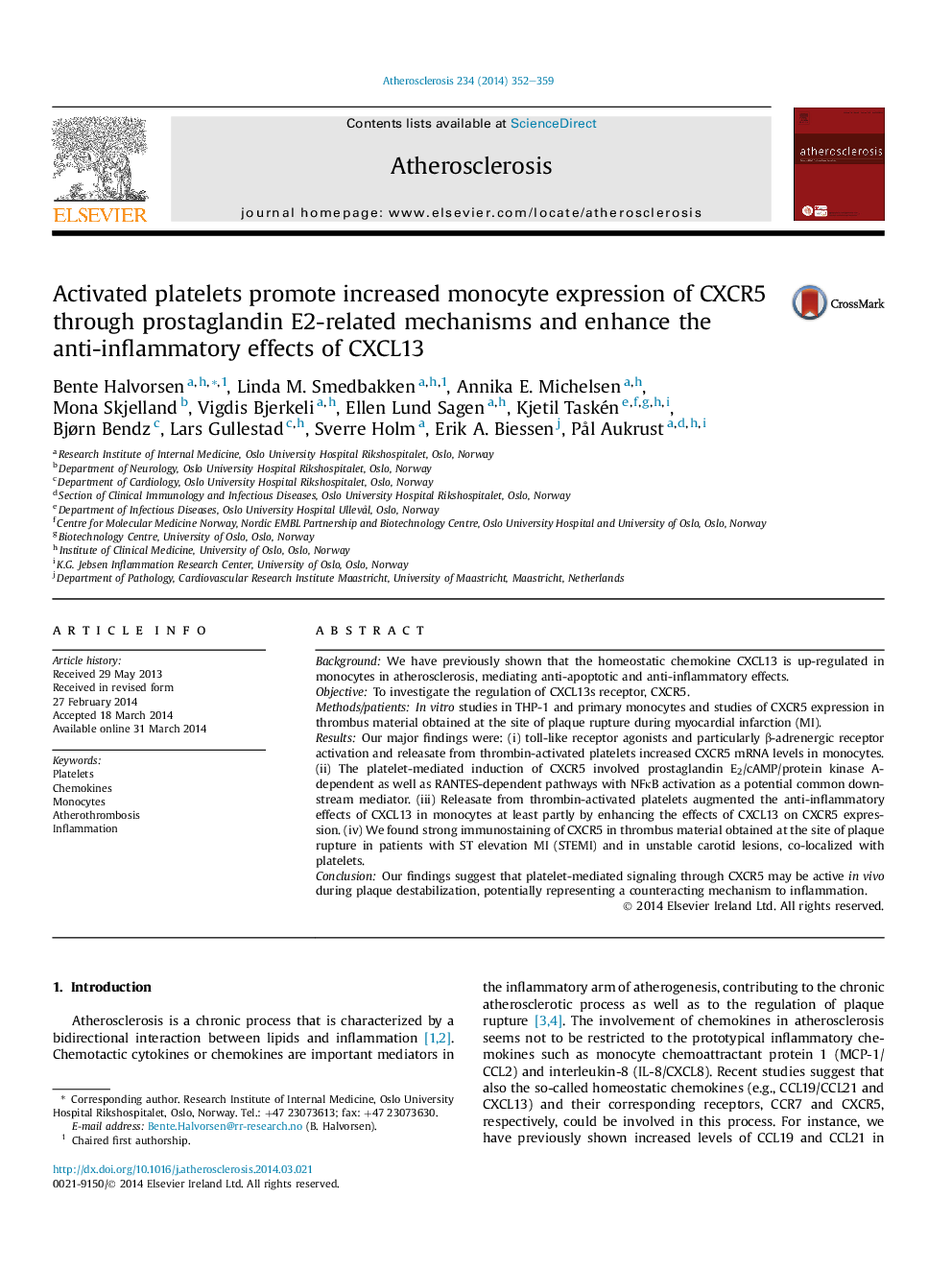| کد مقاله | کد نشریه | سال انتشار | مقاله انگلیسی | نسخه تمام متن |
|---|---|---|---|---|
| 5946730 | 1172361 | 2014 | 8 صفحه PDF | دانلود رایگان |

- Releasate from activated platelets enhanced CXCR5 expression in monocytes.
- Releasate from activated platelets raised the anti-inflammatory effects of CXCL13.
- Strong immunostaining of CXCR5 was seen in clinical thrombus material.
BackgroundWe have previously shown that the homeostatic chemokine CXCL13 is up-regulated in monocytes in atherosclerosis, mediating anti-apoptotic and anti-inflammatory effects.ObjectiveTo investigate the regulation of CXCL13s receptor, CXCR5.Methods/patientsIn vitro studies in THP-1 and primary monocytes and studies of CXCR5 expression in thrombus material obtained at the site of plaque rupture during myocardial infarction (MI).ResultsOur major findings were: (i) toll-like receptor agonists and particularly β-adrenergic receptor activation and releasate from thrombin-activated platelets increased CXCR5 mRNA levels in monocytes. (ii) The platelet-mediated induction of CXCR5 involved prostaglandin E2/cAMP/protein kinase A-dependent as well as RANTES-dependent pathways with NFκB activation as a potential common down-stream mediator. (iii) Releasate from thrombin-activated platelets augmented the anti-inflammatory effects of CXCL13 in monocytes at least partly by enhancing the effects of CXCL13 on CXCR5 expression. (iv) We found strong immunostaining of CXCR5 in thrombus material obtained at the site of plaque rupture in patients with ST elevation MI (STEMI) and in unstable carotid lesions, co-localized with platelets.ConclusionOur findings suggest that platelet-mediated signaling through CXCR5 may be active in vivo during plaque destabilization, potentially representing a counteracting mechanism to inflammation.
Journal: Atherosclerosis - Volume 234, Issue 2, June 2014, Pages 352-359